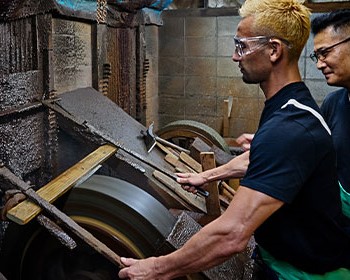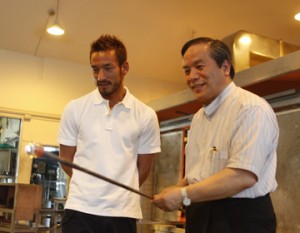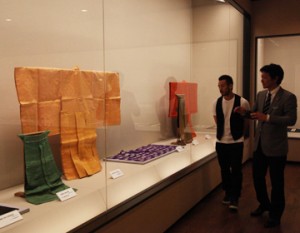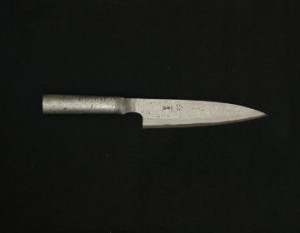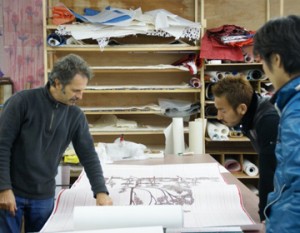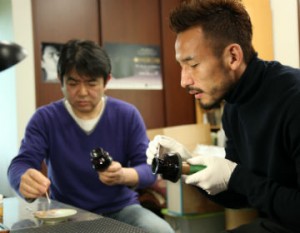This workshop makes Tosa knives, a traditional craft that has been passed down in Kochi for over 400 years.
While 90% of Japanese kitchen knives are made in Osaka and Sakai, 60-70% of these knives are actually made in Kochi.
The workshop is constantly improving its skills to “raise the value of Tosa kitchen knives even higher.
Tosa knives have been handed down for more than 400 years.
The traditional Kochi craft of “Tosa cutlery ” is said to have started when Motochika Chosokabe, the lord of the time, brought back sword smiths when he participated in Hideyoshi Toyotomi’s conquest of Odawara. Thus, the history of Tosa cutlery is long, and it has been carefully passed down through the years to the present day.
Makoto Tadokoro of Tosa Kitchen Knife Studio Tadokoro Cutlery, one of the best sharpeners in Japan, says that he first trained at an “edging shop” in Susaki City.
At first, I just watched and was not allowed to touch the knives. I hated to lose and felt frustrated, so I began to think that I should learn the technique too, and before I knew it, I was hooked. The harder I worked, the more skill I acquired, so it was much more fun than studying or playing.”

Incorporating Sakai’s knife technology into the new Tosa cutlery
After 17 years of training in his hometown, Mr. Tadokoro traveled around the country to various knife production areas in order to further enhance the value of Tosa knives. There, he met his current master in Sakai, Osaka, the home of kitchen knives.
He said, “I wondered what I had done in Kochi, and my previous skills and knowledge were not applicable. If we were to do the same work in Kochi, there would be 10 processes, but at my master’s place, there would be 20 or 30. Anyway, he puts in a lot of time and effort to sharpen the work. I really felt that I had to learn this technique.
The sharpening process is divided into “rough sharpening,” “medium sharpening,” and “finish sharpening. Mr. Tadokoro, who was shocked at Sakai, spends a whole day carefully sharpening his knives in order to breathe new life into Tosa knives.
He grinds by feeling everything: the vibration, the sound, and the color of the sparks transmitted to his hands. As I gain more experience, I acquire a sense of these things.
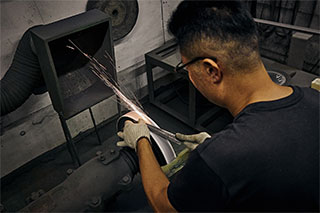
The sharpness of the knife makes the food tasty.
Tadokoro’s knives, the result of his careful work, are beautiful and have excellent sharpness.
A knife that sharpens well does not put pressure on fish, meat, vegetables, etc., so the food tastes better,” he says.
In fact, if an ingredient is cut with a knife that is difficult to cut, it may taste bitter and cloying, and the flavor may be lost. A sharp knife is not only beautiful to look at, but also has great power to change the taste of food.

It is said that 90% of Japanese kitchen knives in Japan are produced in Sakai, but in fact, 70% of them are made in Kochi.
We cannot continue to be a “subcontractor” to Sakai forever. I think we must somehow raise the value of Tosa kitchen knives.
Mr. Tadokoro continues to pursue sharpness today in order to enhance the value of Tosa kitchen knives.
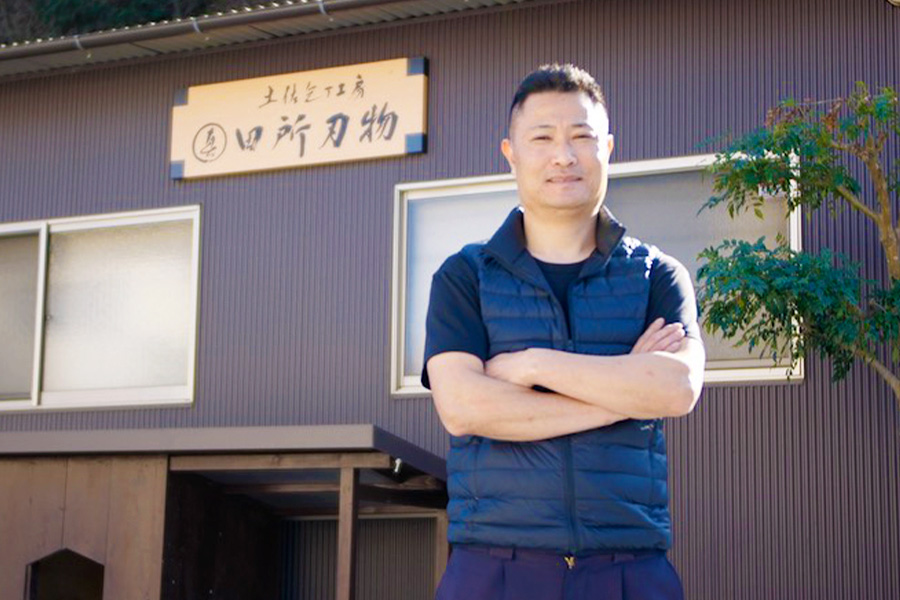
Japanese kitchen knives are attracting attention not only from Japanese chefs but also from all over the world, so much so that French chefs sometimes come all the way to Japan to buy kitchen knives. If you use a good kitchen knife, your food will taste better. Please try a good knife and see how sharp it is.
You can find more information here.



